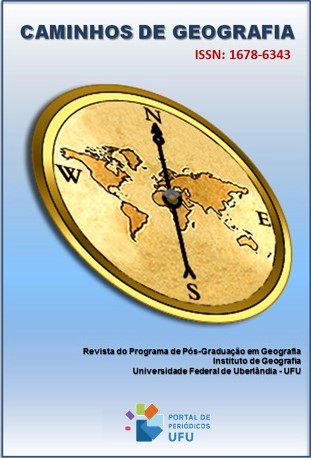TEACHER AND TEXTBOOK: LOOKS AT SCHOOL GEOGRAPHY IN DIVERSITY CONTEXTS
DOI:
https://doi.org/10.14393/RCG249162453Keywords:
Learning, Basic Education, Geography TeachingAbstract
Through this research, we seek to address the teaching of Geography in meeting the diversities in/for geographic education, taking as a centrality the relation among teacher, textbook and geographic science. Methodologically, the work is built through a bibliographical research and also considers the two authors’ professional performance, both for their experience in the evaluation of textbooks and in their teaching activities in different realities of places and subjects. In this sense, we tried to think: how can Geography contribute to the reading of the world in different contexts? How do textbooks contribute or hinder learning in these spaces? How can teachers use these resources, combining geographic science and lifeworld realities? In order to meet diversity, the teacher needs to consider the relationship between science and the world of life when acting in contexts of diversity, (re)signifying textbook proposals. When interpreting different texts and images brought by the book, mediated by the teacher, students tend to understand the transformations that involve the relations that human beings build in society, provoking thinking about the different realities and socio-spatial diversity of the world.
Downloads
Downloads
Published
How to Cite
Issue
Section
License
Copyright (c) 2023 Carina Copatti, Leonardo Pinto dos Santos

This work is licensed under a Creative Commons Attribution-NonCommercial-NoDerivatives 4.0 International License.
Autores que publicam nesta revista concordam com os seguintes termos: a) Autores mantém os direitos autorais e concedem à revista o direito de primeira publicação, com o trabalho licenciado sob a Creative Commons Atribuição-NãoComercial-SemDerivações 4.0 Internacional. b) Autores têm permissão e são estimulados a publicar e distribuir seu trabalho online (ex.: em repositórios institucionais ou na sua página pessoal), já que isso pode gerar alterações produtivas, bem como aumentar o impacto e a citação do trabalho publicado. c) Em virtude de aparecerem nesta revista de acesso público, os artigos são de uso gratuito, com atribuições próprias, em aplicações educacionais e não-comerciais.











